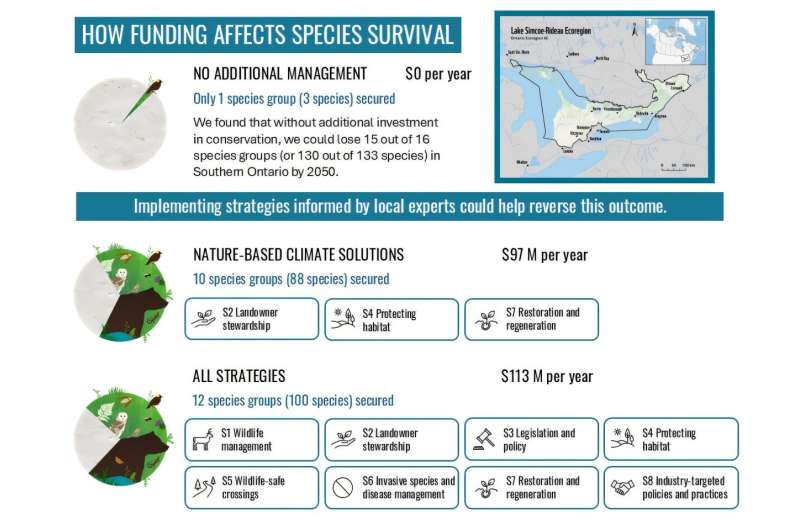A new study warns that 130 species in Southern Ontario face the threat of local extinction by 2050 if no protective measures are implemented. Conducted by the University of British Columbia and the World Wildlife Fund Canada, the research highlights the urgent need for conservation efforts to preserve biodiversity in the region.
The study indicates that 98% of the currently at-risk species in the area could disappear within the next 25 years without intervention. Among these species are the black bear, short-eared owl, and Blanding’s turtle, all of which hold ecological and cultural significance. The findings are published in the journal Ecological Solutions and Evidence.
Investment Strategies for Recovery
Researchers propose that an investment of merely $7 per Ontarian could enable the recovery of 75% of these species. This translates to an estimated annual investment of $113 million for eight targeted conservation strategies. These strategies range from habitat protection to creating safe wildlife crossings and better management of invasive species.
Abbey Camaclang, a researcher at UBC’s Faculty of Forestry, emphasized the dire situation, stating, “If Ontario continues with a ‘business as usual’ approach, 130 species—98% of those at risk—could disappear from the region by 2050. But our analysis shows recovery is possible and identifies the most cost-efficient ways to achieve it.”
The study utilized the Priority Threat Management (PTM) framework developed by Dr. Tara Martin. This decision-making tool incorporates local expert knowledge to evaluate costs, benefits, and feasibility while pinpointing conservation actions that yield the greatest biodiversity benefits at the lowest cost.
The Broader Impact of Conservation
The eight strategies identified include wildlife management, landowner stewardship, legislation and policy reform, habitat protection, invasive species management, and restoration practices. Dr. Martin, the senior author of the study, noted that Canada currently has 864 species at risk of extinction without a costed plan for their recovery.
In addition to aiding wildlife, the conservation strategies could enhance water quality, protect culturally significant species for Indigenous communities, and create employment opportunities. The proposed actions could also mitigate greenhouse gas emissions, avoiding at least 11.2 million tons of CO2 equivalent emissions while sequestering 137.6 million tons of CO2 equivalent, contributing to Ontario’s broader climate goals.
James Snider, Vice President of Science, Knowledge, and Innovation at WWF-Canada, stressed the urgency of the situation: “Without new investments and strong legislation, we risk losing species like the American bumble bee, barn owl, Eastern wolf, and piping plover. We also weaken ecosystems that are essential to community well-being and livelihoods.”
The application of the PTM framework is not limited to Ontario. WWF-Canada has successfully implemented it in the Wolastoq watershed in New Brunswick, restoring over 5,300 hectares of habitat and planting more than 31,000 trees and plants.
Dr. Martin concluded, “By applying PTM to the Lake Simcoe-Rideau ecoregion, we’ve identified the most effective conservation actions and can quantify their broader benefits—improved water quality, job creation, and carbon storage. This gives decision-makers a clear roadmap to recover species at risk while delivering real environmental and societal value.”
The findings underscore the critical need for immediate action to protect at-risk species in Southern Ontario. Without a concerted effort, the region risks losing its natural heritage and the ecological roles these species play.







